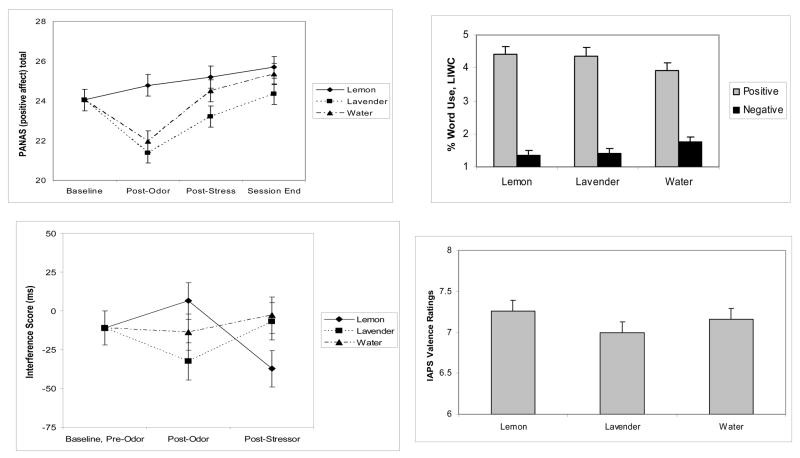Figures 2a, 2b, 2c, 2d.
Differences in one self-report and three unobtrusive mood measures as a function of odor condition. Baseline-adjusted mean (± SEM) changes in self-reported positive affect on the PANAS as a function of time and odor (2a) showed the greatest difference immediately following the first odor application. Subjects showed greater recovery following the stressor when smelling lemon compared to lavender or water as reflected in baseline-adjusted mean (± SEM) interference in responses to negative emotion words on the Stroop (2b). The differences in mean (± SEM) positive and negative emotion word use in thought listings were greater on the days when subjects smelled lemon or lavender than the day they smelled water (2c). IAPS picture valence ratings from the screening session were significantly lower for lavender and water compared to lemon (2d).

